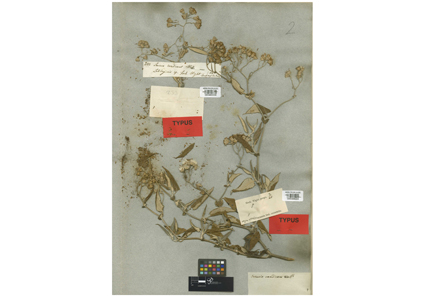Abstract
N/A
References
- Cassini, A.H.G. de (1819) Suite du sixième mémoire sur la famille de Synanthérées, contenant les caractères des tribus. Journal de Physique, de Chimie, d’Histoire Naturelle et des Arts 88: 189–204.
- De Candolle, A.P. (1834) Compositae Wightianae. In: Wight, R. & Arnott, G.A.W. (eds.) Contributions to the Botany of India, London, Parbury, Allen & Co., pp. 22–23.
- De Candolle, A.P. (1837) Prodromus Systematis Naturalis Regni Vegetabilis 6. Paris, Strasbourg, London, 368 pp.
- Dumortier, B.C.J. (1827) Florula Belgica, opera majoris prodromus. 172 pp.
- Karthikeyan, S., Sanjappa, M. & Moorthy, S. (2009) Asteraceae. In: Flowering plants of India, Dicotyledons, (Acanthaceae—Avicenniaceae) Vol.1. Botanical Survey of India, Kolkata, pp. 184–299.
- Karthikeyan, S., Sanjappa, M., Moorthy, S., Bhattacharjee, B., Dash, S.S., Meena, S.L. & Mastakar, V.K. (2020) Asteraceae In: Mao, A.A. & Dash, S.S. (eds.) Flowering Plants of India: An Annotated Checklist. Dicotyledons. Vol. 1. Botanical Survey of India, Kolkata, pp. 786–787.
- Linnaeus, C. (1753) Species Plantarum. Impensis Laurentii Salvii, Stockholm. 866 pp.
- Mathur, R. (1995) Asteraceae In: Hajra, P.K., Rao, R.R., Singh, D.K. & Uniyal, B.P. (eds.) Flora of India. Vol. 13. Botanical Survey of India, Calcutta. pp.186–323.
- Pelser, P.B., Nordenstam, B., Kadereit, J.W. & Watson, L.E. (2007) An ITS phylogeny of tribe Senecioneae (Asteraceae) and a new delimitation of Senecio L. Taxon 56 (4): 1077–1104. https://doi.org/10.2307/25065905
- Singh, P., Karthigeyan, K., Lakshminarasimhan, P. & Dash, S.S. (2015) Endemic vascular plants of India. Botanical Survey of India, Kolkata. pp. 112–113.
- Turland, N.J., Wiersema, J.H., Barrie, F.R., Greuter, W., Hawksworth, D.L., Herendeen, P.S., Knapp, S., Kusber, W.-H., Li, D.-Z., Marhold, K., May, T.W., McNeill, J., Monro, A.M., Prado, J., Price, M.J. & Smith, G.F. (eds.) (2018) International Code of Nomenclature for algae, fungi, and plants (Shenzhen Code) adopted by the Nineteenth International Botanical Congress Shenzhen, China, July 2017. Regnum Vegetabile 159. Glashütten: Koeltz Botanical Books. https://doi.org/10.12705/Code.2018.
- Wallich, N. (1831) A Numerical list of dried specimens of plants in the East India Company’s Museum, collected under the superintendence of Dr. Wallich of the Company’s Botanic Garden at Calcutta. London. 107 pp.
- Wight, R. & Arnott, G.A.W. (eds.) (1834) Contributions to the Botany of India. London, Parbury, Allen & Co., pp. 22–23.


